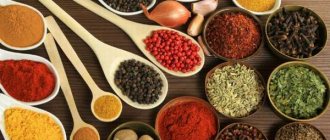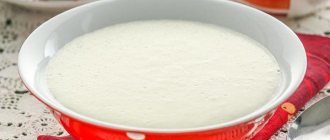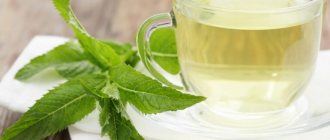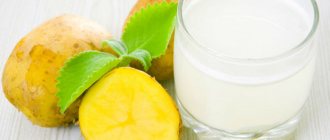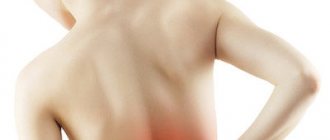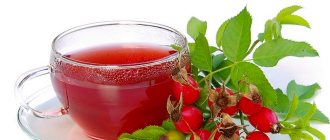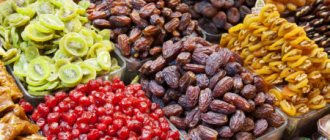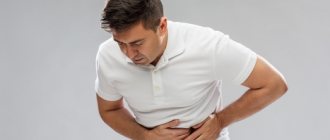Pancreatitis is an inflammatory pathology of the pancreas, which occurs quite often. The acute type of the disease, the deterioration of the condition of an individual with a chronic type of disease, is associated with sharp, severe discomfort in the peritoneal area. The patient requires therapy in a hospital setting. In addition to medications that eliminate discomfort and spasms, the person is prescribed cold lotions and bed rest. Fasting during pancreatitis is a prerequisite for improving the patient’s well-being.
What is inflammation in the pancreas? Why is it dangerous?
The activities of this body play a very important role. It produces special substances - enzymes, with the help of which nutrients are absorbed from food. If the gland functions normally, fluid from its cavity is released into the intestines. With inflammatory pathology of the organ, it produces too much juice. The removal of this substance is difficult. Enzymes destroy gland tissue. Organs close to it also suffer. Signs of the disease are discomfort in the upper part of the peritoneum, nausea, vomiting, loss of appetite, and diarrhea. Deterioration in well-being can be triggered by various factors (emotional overload, consumption of alcohol-containing products and fatty foods, uncontrolled use of medications). In the absence of adequate therapy, the organ is gradually destroyed, and the digestion process becomes difficult. A person cannot normally absorb necessary substances, which leads to death. Fasting for pancreatitis in a hospital setting, following a proper diet after discharge - all these measures help to quickly stabilize the patient’s condition.
The main causes of inflammation of the gland
Provoking factors of pathology:
- chronic acalculous, calculous cholecystitis, dysfunction of the sphincter of Oddi and biliary tract;
- acute and chronic intoxication (vapors of heavy metals, etc.);
- abuse of alcoholic beverages;
- chronic gastroduodenitis;
- long-term use of steroid hormones, sulfonamides or non-steroidal anti-inflammatory drugs;
- history of infectious diseases;
- autoimmune processes, abdominal trauma;
- nutritional factor (prevalence of spicy and fried foods, instant foods, spices and confectionery in the diet).
In any case, an acute or sluggish inflammatory process develops in the organ tissue, which leads to pancreatic insufficiency and the entry of a large volume of proteolytic enzymes into the bloodstream.
The importance of this method of therapy for the patient
Temporary refusal of food, according to experts, is an effective way to reduce the process of inflammation in the tissues of the pancreas. During a certain period, the organ is released from the obligation to perform its functions and is at complete rest.
Fasting for pancreatitis should not last more than 3 days. During this period of time, the gland cells and its activity can be completely restored. The inflammatory process (both constant and acute) often becomes the cause of the development of serious complications. They manifest themselves in the form of tissue necrosis, the inability of the organ to perform its functions. Therefore, specialists try to take measures to improve the patient’s condition as early as possible. In the hospital, the patient is given ice compresses to relieve discomfort. A person must constantly remain in bed for several days. This will speed up the recovery process. Therapeutic fasting for pancreatitis is carried out in a hospital, under the supervision of a doctor.
First, the patient needs to completely eliminate food intake. Then he gradually switches to a special diet. At the initial stage of pathology, such measures provide a very good result. Patients do not even have to take large amounts of medication. There are several ways to fast. These are discussed in the following sections.
Expert opinion
In recent years, surgeons are increasingly registering destructive forms of pancreatitis, which without proper treatment can lead to death. Therefore, the question of adequate and effective therapy is relevant.
It is important to understand that a patient with any form of acute pancreatitis in the early stages should be treated in a surgical department, since he may require surgical intervention. Conservative treatment is based on intravenous or oral administration of antisecretory drugs, proteolysis inhibitors and antibiotics. The former reduce the basal secretion of hydrochloric acid in the stomach; proteolysis inhibitors are used to reduce toxemia caused by resolution of glandular tissue. Antibiotics are prescribed to prevent bacterial complications.
In addition, intensive infusion therapy is carried out to detoxify and replenish plasma loss. An obligatory stage of treatment is pain relief with potent or narcotic substances.
It is equally important to follow the prescribed regimen, which includes rest and dietary recommendations. Scientists recommend only in urgent cases to adhere to therapeutic fasting while simultaneously replenishing protein and energy costs with parenteral nutrition (intravenous drip). In case of moderate pancreatitis, therapeutic fasting is prescribed for 7-9 days, in severe form - for 12-18 days. However, the sooner the patient switches to a normal diet, the faster the disruption of intestinal barrier function will be prevented.
Applying cold to the pancreas area is not included in the list of standards for the treatment of acute pancreatitis, but such a procedure helps reduce pain and the intensity of capillary bleeding in the parenchyma of the organ. Rest (bed or semi-bed rest) is indicated during the acute period of the disease and the first days of rehabilitation after surgery. Extension of the regimen is possible only with the consent of the doctor.
If you liked the material: rate it and share with friends
Methods
Therapeutic fasting for pancreatitis is divided into dry and allowing the intake of liquid (still water, decoction of rose hips, chamomile). Experts have differing opinions about these methods. Some doctors believe that the first method is the most effective. However, this regime can last no more than 24 hours. Then the patient needs to drink water without gas, often, but with a gradual increase in its volume.

Over the next two days, a person is allowed to eat a little vegetable broth. On the fourth day, the menu needs to be diversified. During exacerbations, the patient experiences strong vomiting, severe discomfort, and high fever. Fasting with pancreatitis will not be particularly difficult for him due to loss of appetite and pain. However, refusing food and liquid, despite all the benefits of this event, is not suitable for all individuals. It is contraindicated for the following categories of persons:
- Women who have experienced an exacerbation of pathology during pregnancy.
- Patients with low blood pressure.
- People with low blood glucose concentrations.
- Persons suffering from anemia or vitamin deficiency.
Fasting during inflammation of the pancreas can be gentle. During the first three days, the patient drinks a decoction of rose hips, still mineral water and chamomile tea in unlimited quantities. On the fourth day, foods are gradually included in his diet. If a patient with an acute type of disease adheres to this regimen, he can protect himself from the disease becoming chronic.
Therapeutic fasting for pancreatitis at home
Pancreatitis is a serious disease that disrupts the functioning of the pancreas (the flow of gastric juice into the intestines is disrupted), which can lead to irreversible processes. The disease is often asymptomatic, so the patient often finds out about it after a while, when the chronic stage progresses.
Pancreatitis can be treated using various methods, both traditional and folk. The main thing to know is that the disease requires rest, proper microclimate, adherence to a strict diet and even fasting.
Effectiveness of fasting
Fasting for pancreatitis has its own healing purpose - it is temporary rest for the diseased organ. During this time, the functioning of the pancreas is restored. Recovery occurs due to the fact that gastric juice ceases to be produced to digest food and all energy is directed towards healing.
This method was studied by scientists many decades ago and is considered one of the most effective home treatments. Patients who have undergone fasting claim that it was precisely the refusal to eat for a certain period that helped them completely overcome the disease. Judging by the reviews of real people, we can conclude that this method of treatment is quite realistic, especially when the disease is only at the initial stage.
As mentioned above, with pancreatitis, the digestive system, and especially the pancreas, needs rest. This means that food should not enter the body for a certain time. Fasting for pancreatitis is a “dry fast” lasting up to three days. During this period, the gastrointestinal tract organs stop working and enter a period of rest.
In order not to harm health or aggravate the course of the disease, the patient should always be under the supervision of a specialist, because only the doctor knows the indications and contraindications of this method for his patient.
In acute form
The acute stage of pancreatitis indicates that a section of the pancreas has died. The person feels pain, nausea, and chills. In addition, body temperature may increase. At this point, doctors recommend completely abstaining from food for 2-3 days. The patient may be admitted to a hospital to ensure complete rest and hunger. Before starting this method, a complete examination by a gastroenterologist is required.
The patient is allowed to drink water or rose hip decoction at room temperature. You need to drink slowly, in small sips. These drinks will relieve tension from the pancreas and help you enter a state of rest.
After a full examination and prescription of fasting, treatment can be done without drug therapy. But only a doctor can decide this.
In chronic form
The chronic form of the disease may be asymptomatic, but it is worth understanding that if the disease has already been diagnosed, this indicates the beginning of the destruction of pancreatic tissue. To prevent an exacerbation, the patient must adhere to proper nutrition, as prescribed by the doctor. If there are signs of exacerbation (pain in the lower abdomen, nausea with vomiting, fever), you need to refuse food and any drink for one day.
Simply refusing food will not be enough. Rest, that is, bed rest, is also important for the patient. Hunger and rest will ensure that all the energy produced by the body is directed towards restoring the functionality of the pancreas.
You need to break fasting very carefully, following all the rules and recommendations. On the first day, doctors allow you to drink warm boiled water and a little vegetable broth. After 2-3 hours, you can eat half a bowl of vegetable soup.
There is no need to abuse therapeutic fasting. Remember that the duration of “fasting” days must be agreed with your doctor. Failure to follow the doctor's recommendations can worsen the functioning of not only the pancreas, but also the entire body.
Rules and recommendations after fasting
Fasting treatment provides several simple rules for those who want to cope with the disease and not develop health complications. The first and main rule is the diet, which after fasting days should be entered into gradually, starting with the most easily digestible foods.
Main rules:
- Small meals are the main rule. A patient with pancreatitis should eat small meals 6–8 times a day. The attending physician will tell you what the portion should be and what should be included in the diet.
- The weight of each serving should not exceed 250 g.
- To prevent foods from irritating the gastric mucosa, it is recommended to grind them in a blender or rub them through a sieve.
- The daily diet must be prepared correctly. There should be as much protein as possible, a minimum of fat, but you will have to give up carbohydrates for a while.
- Smoked, salted, spicy and fried foods are taboo for pancreatitis.
- Food should be consumed only warm, since cold and hot foods irritate the gastrointestinal tract. Even carbonated mineral water, which patients are allowed to drink, should also be warm.
- Alcoholic drinks should be completely excluded.
- It is better to boil, steam or oven the products.
A few simple recommendations will improve your general condition and get rid of the disease at the initial stage. Sometimes it happens that only fasting and proper nutrition after it are enough.
Prohibited Products
Pancreatitis is a disease that requires proper nutrition. To heal and restore the functionality of a diseased organ, you need to correctly create not only your daily routine, but also your diet. There is a list of foods that are prohibited to eat during pancreatitis.
These products include:
- spices and hot vegetables (garlic, onion, horseradish);
- carbonated and alcoholic drinks;
- strong tea and coffee;
- fatty meat and fish;
- sweets and bakery products;
- vegetables that cause gas formation (legumes, all varieties of cabbage, radishes, sorrel);
- pickled, fried, smoked foods.
All these foods are quite “heavy” to digest and the digestive system spends a lot of energy on this function.
Authorized Products
During the treatment of pancreatitis at home, the patient’s diet must contain certain dishes, which include foods that are healthy for the body, that do not require a lot of energy and at the same time are rich in useful microelements and vitamins.
Healthy foods and dishes include:
- vegetables (potatoes, pumpkin, carrots, beets);
- green and herbal tea;
- jelly and compote;
- rice and buckwheat groats (it is advisable to cook porridge with milk);
- steam cutlets and meatballs;
- boiled chicken eggs;
- broths based on lean fish and meat.
We can conclude that fasting for pancreatitis is a real and effective method of treatment and it is impossible to achieve a complete cure without following a diet. Do not forget that everything should be carried out only under the supervision of a doctor.
kiwka.ru
Refusal to eat after an attack
The features of this event are determined by the type of pathology. Fasting during exacerbation of pancreatitis should be carried out in a hospital setting. During this period, the patient should be examined and observed by a specialist. For two days, the patient drinks a liquid heated to a temperature of 36 degrees, for example, chamomile decoction.
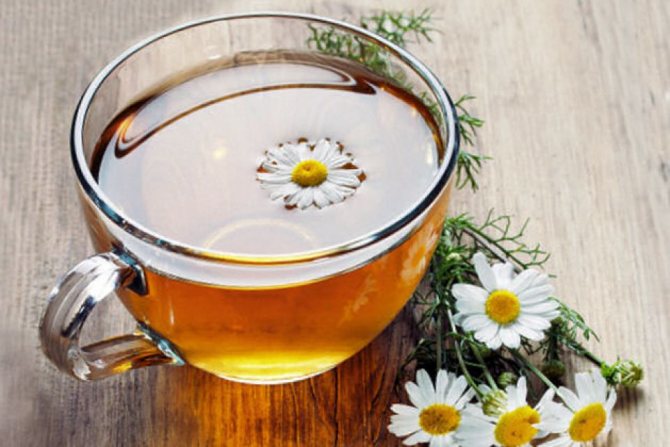
Cold and too hot drinks are strictly prohibited. During these days the patient needs to stay in bed. Then, if a person does not feel discomfort, he can gradually expand his diet. When a stable remission is achieved, it will be enough for the patient to spend fasting days on water once a week.
How does fasting affect the liver?
Liver health directly depends on what food and how it enters the body. Poor nutrition, taking medications, and bad habits literally cause a “blow” to the liver, create an excessively heavy load, and complicate its work. As a result, toxic substances and waste accumulate, which affects our well-being. Gallstones that form in the gallbladder over decades pose a serious danger to human health.
When water is still used during fasting, the human body more easily adapts to the diet, which in turn leads to the cleansing of liver tissue without disrupting its functions. In this case, the resource is replenished at the expense of its own building materials.
The absence of food gives physiological rest to the liver, bile ducts and endocrine system. It also has a positive effect on the pancreas, which now more efficiently produces the hormone insulin, which regulates carbohydrate metabolism.
Basic principles of nutrition
Symptoms of pancreatitis after fasting, if it is too long, may reappear. In order to avoid this, you should not refuse food already on the fourth day after the onset of the attack. The patient's condition stabilizes if he eats small amounts, but often (up to 6 times a day). First, you should eat foods in the form of purees, consisting of one component. This measure will avoid irritation of the gastrointestinal tract. It is necessary to limit carbohydrates and lipids, but include a sufficient amount of microelements, proteins and vitamins in the diet. Food should have a neutral taste. Excessively sweet, too sour or salty dishes are excluded. Spicy seasonings, dyes and other additives are also prohibited. On the first day after fasting for pancreatitis, the patient can eat dried wheat bread, rice broth, tea with a small amount of granulated sugar. The next day, the diet is introduced with vegetables (boiled or steamed), soups according to vegetarian recipes in the form of puree.
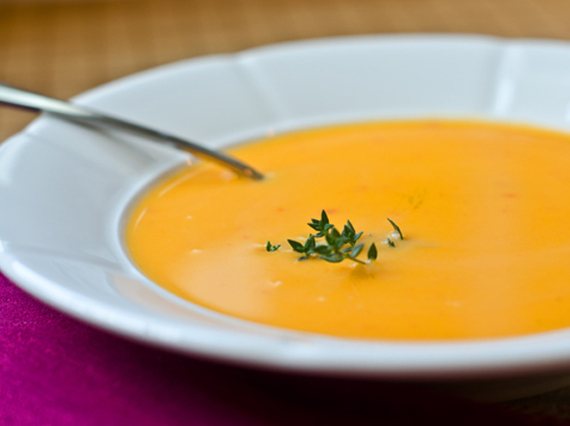
It is better to replace vegetable fat with butter. It is added to dishes in small portions. The energy value of the diet after fasting should not exceed 1800 kilocalories. The diet should be followed for three weeks.
Locked and dangerous
The pancreas performs several functions in the body. One of them is the production of digestive enzymes that break down proteins, fats and carbohydrates that come with food. At first they are inactive; they begin to perform their duties only when, having passed along the pancreatic duct, they enter the duodenum. This is normal. If the duct is blocked for some reason, the enzymes remain locked inside the gland. Sooner or later they become active and begin to digest - but not food, but pancreatic cells. Inflammation develops, part of the gland is destroyed, and connective tissue forms in its place.
Both scenarios are fraught with serious complications. No other organ is capable of taking over the work of the pancreas, so the death of its tissue (pancreatic necrosis) is an irreparable loss for the body.
The consequences of acute pancreatitis are directly related to the scale of destruction. Basically, it is small - in most people the inflammation is mild. But there are also cases when almost all the iron dies. They are incompatible with life.
The most important function of the pancreas is the production of insulin, which is necessary to control blood sugar levels. The fewer cells involved in its production, the higher the risk of diabetes. It is often observed in the later stages of chronic pancreatitis. Another formidable complication is pancreatic cancer: one of the most aggressive oncological diseases, which modern medicine is practically unable to cure.
This is why problems with the pancreas cannot be ignored.
Refusal to eat in chronic form of the disease
This type of disease is characterized by mild symptoms that are sometimes difficult to detect. The condition of the digestive organs can only be assessed through tests. To prevent the development of complications, the patient should refuse food for the whole day. Fasting for chronic pancreatitis is usually carried out at home. The patient must remain in bed throughout the day.
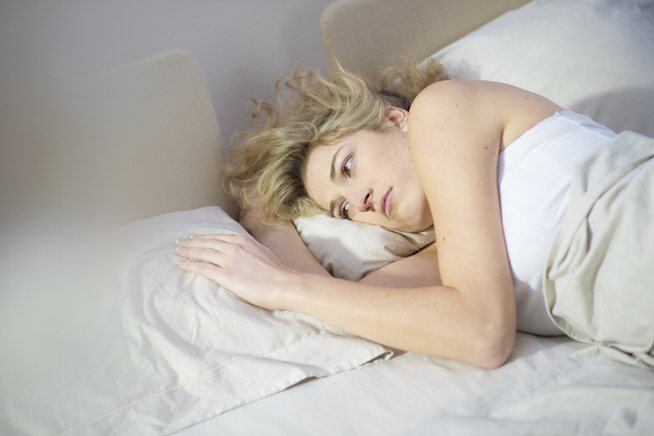
The next day, the patient needs to eat a plate of pureed first course or vegetable broth. With chronic inflammation of the pancreas, health returns to normal faster than with an acute attack. However, recovery from fasting with pancreatitis, regardless of the characteristics of its course, should be slow. It is necessary to gradually add different dishes to the diet and monitor the state of the digestive system.
Cold for inflammation of the pancreas

Heating pad with ice to relieve pain from pancreatitis
As you know, cold, hunger and rest during pancreatitis are the three basic positions in relieving persistent pain. If the mechanism of fasting has become clear, then why apply something cold remains a mystery.
Cold during pancreatitis leads to a reflex spasm of small vessels and redistribution of blood flow in the gland and nearby organs. In this way, the functional load on the pancreas is reduced, and with the development of hemorrhagic pancreatitis, the intensity of bleeding from damaged parenchymal vessels is reduced.
Most often, a regular heating pad filled with ice is used, which must be applied to the abdomen, in its upper part - between the umbilical region and the xiphoid process of the sternum. It is recommended to keep it cold for no more than 30 minutes, and breaks between procedures should be 1.5-2 hours.
The main rules for further diet
After feeling better, the diet of patients with chronic pathology should be based on the following rules:
- You should eat enough animal proteins.
- It is necessary to limit the amount of table salt to 10 grams.
- Drink up to 2 liters of liquid per day.
- The energy value of the diet should not exceed 2600 kilocalories.
- You need to eat food in small portions, often, prepare mashed, boiled, baked and steamed foods.
- Avoid foods that are too hot or too cold.
Where did he come from?
Pancreatitis can be caused by a birth defect in the pancreas, certain autoimmune diseases, or certain medications. The disease can be triggered by a number of infections, hepatitis B or mumps. But most often, inflammation of the pancreas is caused by alcohol abuse.
The most dangerous combination of alcohol with fatty, spicy, salty foods. That is why the maximum number of exacerbations occurs after the holidays, when we lean on alcohol and delicacies. Such food in itself is dangerous: doctors attribute the fact that the incidence of pancreatitis has been constantly increasing in recent years to the increase in consumption of fatty foods.
List of prohibited foods
It includes the following:
- Any types of drinks containing ethyl alcohol.
- Sparkling water.
- Meat and fish with a lot of fat, decoctions from them.
- Mushroom dishes.
- Too sour or sweet berries and fruits.
- Legumes.
- Pastries, fresh bread and buns made from wheat flour.
- Cabbage.
- Radish and radish.
- Eggplant.
- Desserts (jam, chocolate, sweets, cakes, ice cream).
- Strongly brewed tea, drinks containing caffeine.
- Salted, pickled, smoked and spicy dishes, spicy cheeses.
- Fried foods.
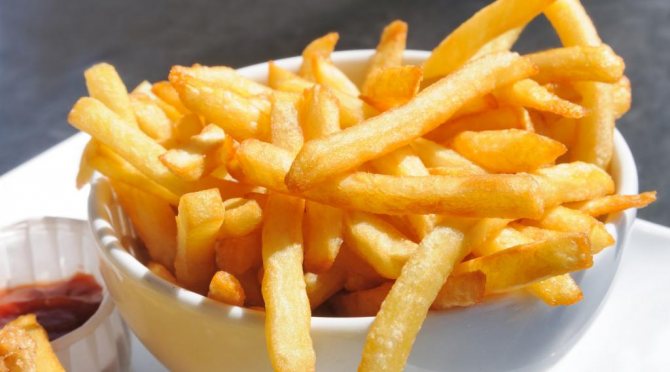
- Semi-finished products.
- Juices from packages.
- Hot chocolate, cocoa.
- Too sour dairy products.
- Salted nuts, chips.
Features: preparation, entry and exit
The positive effects of fasting on the liver have been proven by many people. Cleaning is carried out over 3 days, observing the correct entry and exit from the procedure.
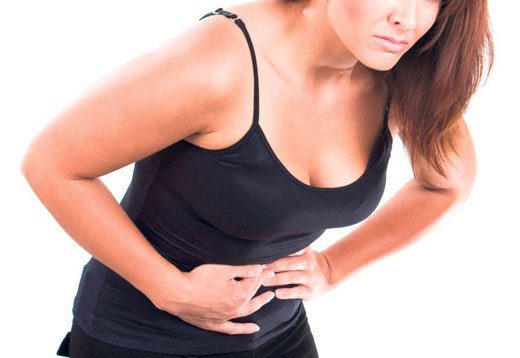
Cleansing the liver begins after a thorough cleansing of the intestines has been completed. Otherwise, internal infection will occur due to the reabsorption of harmful particles into the walls of the unclean intestine.
The preparatory stage of cleaning is no less important than the process itself. It is necessary to properly tune in a week before the start of the procedure itself. If a person feels unwell, there is stress, weakness, lack of sleep, it is necessary to maintain a high level of energy, do not start a diet and treat with hunger.
During preparation, several rules are followed:
- It is better to start a diet on Wednesday or Thursday. Meat, fatty foods, and flour products are excluded from the diet. They eat only vegetables and fruits.
- During the week, you are allowed to eat a small piece of low-fat fish 2 times if it is difficult to tolerate the lack of meat.
- It is useful to drink more water to cleanse the gastrointestinal tract well.
On the eve of the first day of cleansing, they have dinner until 18.00. The process is then divided into three stages:
Changes in the body
Before going to bed, drink 0.5-1 liters of liquid. In the morning - a cleansing enema on an empty stomach. Mild malaise, body weakness, feeling of hunger.
At the final stage of a three-day fast, probing of the liver is performed - toxins are mechanically removed using a heating pad, ingestion of an acidic and oily solution. An acidic environment is required to soften the ducts, an oily environment is required for better passage of cholesterol plugs.
- For the procedure, prepare lemon juice and vegetable oil (olive), 200 ml of each ingredient.
- Lie with your right side on a heating pad, then take 3 tablespoons of lemon juice and the same amount of oil. Can be drunk mixed.
- Every 15 minutes, drink the solution until the mixture (400 ml) is completely finished.
- Keep the heating pad on for 3 hours. Then you can go to bed.
After completing the session, an hour later, the urge to defecate appears, indicating the release of toxins. But the urge to eject is individual for each person. The reaction may appear immediately or the next morning.
It is necessary to do a cleansing enema after waking up on the fourth day. After that, it’s easy to have breakfast and eat plant-based foods all day. A repeat cleansing cycle can be done after a month.
What is allowed to be consumed?
When you come out of fasting with pancreatitis of the pancreas, you can eat the following foods:
- Skinny varieties of fish.
- Lean meat (chicken or turkey without skin, beef, veal or rabbit).
- Dairy products containing a small amount of fat (for example, homemade cottage cheese).

- Potatoes, pumpkin, zucchini, boiled, baked or pureed.
- Porridge made from buckwheat, oatmeal or rice, cooked in water.
- Dried bread made from wheat flour.
- Steamed egg white omelettes.
- First courses made from pureed vegetables.
- Boiled root vegetables with a sweet taste (beets, carrots).
- Compote of dried fruits and berries, fruit juice, jelly, tea with chamomile.
- Mineral water without gas containing alkali.
Faces of illness
In acute cases, it is difficult not to notice pancreatitis. Severe pain in the upper abdomen, radiating to the back (such pain is called shingles), vomiting that does not bring relief, rapid heartbeat - all these are symptoms of inflammation that has begun in the pancreas. If acute pancreatitis causes complications, the temperature may rise on the 3rd–5th day after the onset of the disease. But until this time it is better not to endure it and consult a doctor at the first manifestations of the disease. After all, if an exacerbation occurs in a moderate or severe form, it can end in suppuration and even peritonitis.
Signs of chronic pancreatitis are less obvious. About 30–40 minutes after eating, you may experience abdominal pain, mild nausea, and decreased performance. People often lose weight, although they eat enough and with appetite. They suffer from flatulence and diarrhea. However, chronic pancreatitis sometimes occurs without symptoms, so a person becomes aware of its presence only when an exacerbation occurs. It is not much different from the manifestations of an acute form of the disease.
In mild cases, the main principle of treating pancreatitis can be expressed in three words - cold, hunger and rest. You will have to abstain from food for several days; only still mineral water, rose hip decoction and weak tea are allowed. Bed rest and cold compresses on the upper abdomen are required.
However, this does not mean that you can cope with acute pancreatitis on your own. Treatment should be carried out in a hospital. It is necessary for a doctor to monitor your condition in order to notice complications in time. In addition, it is the doctor who must prescribe medications that help relieve the attack. These are painkillers and antispasmodics, enzyme and antacid drugs. If there is a threat of suppuration, antibiotics are used. For pancreatic abscess and extensive pancreatic necrosis, surgical intervention is necessary. The operation can be either abdominal or laparoscopic - it all depends on the patient’s condition and indications.
Chronic pancreatitis
Chronic pancreatitis is a chronic inflammatory-dystrophic disease of the pancreas, characterized by a progressive course with the replacement of its exocrine and endocrine tissue by fibrous tissue with the gradual development of exocrine and endocrine insufficiency.
The disease most often affects men. At the beginning of the development of the disease, swelling of the pancreas, its necrosis and inflammation of the parenchyma of a serous nature are noted. As the disease progresses, sclerosis of the organ, obliteration of its excretory ducts develop, and the gland tissue undergoes calcification. Stones form in the remaining excretory ducts of the gland. The size of the gland decreases.
Chronic pancreatitis can be either primary or secondary. Primary chronic pancreatitis is characterized by the fact that the pathological process is localized in the pancreas from the very beginning. Chronic pancreatitis is secondary if it develops against the background of any disease.
Etiology
There are a large number of causes leading to the development of chronic pancreatitis. Among them, there are 2 main reasons: alcohol abuse and cholelithiasis. In the first case, primary chronic pancreatitis develops, in the second - secondary. Other diseases of the gastrointestinal tract leading to the development of chronic pancreatitis are chronic cholecystitis, chronic gastritis, duodenitis, ulcerative
disease, pathology of the major duodenal papilla. In addition to diseases of the gastrointestinal tract, the causes of the development of chronic pancreatitis can be viral infections, toxic effects, allergic effects, hormonal disorders, metabolic diseases, as well as hereditary predisposition.
Pathogenesis
Normally, the pancreas is protected from the effects of its own enzymes by a number of mechanisms. The metabolism of acinar cells normally remains unchanged, which prevents them from being digested by pancreatic enzymes due to their intactness. In addition, pancreatic tissue contains a sufficient amount of enzyme inhibitors. The gland tissue has an alkaline environment; the duct cells secrete a large amount of mucus. In a normal state, there is an adequate outflow of pancreatic juice and lymph from the gland. When these defense mechanisms are damaged, the gland's tissue is damaged by its own enzymes, such as trypsin and lipase. Under the influence of various etiological factors, various defense mechanisms are disrupted.
In case of alcohol damage, secretin secretion is activated, and the pressure inside the pancreatic ducts increases. Alcohol intake leads to swelling of the mucous membrane of the duodenum and sphincter of Oddi, which, in turn, leads to an even greater increase in pressure in the ducts of the gland. If the patient is currently eating fatty foods, the production of juice by the pancreas is stimulated. Since the outflow of juice is difficult, the concentration of enzymes in the gland increases and damage to its tissue occurs.
If the disease develops against the background of pathology of the biliary tract, its pathogenesis is as follows: a backflow (reflux) of bile occurs into the duct, where enzymes are activated. With this mechanism of disease development, intraductal pressure may also increase due to concomitant pathology of the sphincter of Oddi. Increased pressure leads to damage to the cell membranes of the pancreas, and their self-digestion occurs.
An increase in pressure inside the ducts is possible due to insufficient production of secretin, which leads to disruption of the outflow of pancreatic juice. At the same time, the concentration of proteins that make up the juice increases, and they form protein plugs in the ducts of the gland. If the blood supply to the gland tissue is disrupted, its metabolism is disrupted, atrophy develops, and normal tissue is gradually replaced by fibrous tissue.
Classification
1) primary chronic pancreatitis (alcoholic) - “small duct” pancreatitis;
2) secondary chronic pancreatitis (cholepancreatitis) - pancreatitis of “large ducts”.
There is a classification according to the clinical forms of the disease:
1) chronic recurrent pancreatitis;
4) latent chronic pancreatitis (painless).
Clinic
In chronic pancreatitis, a number of syndromes are distinguished. They are inflammatory-destructive syndrome, disorders of external and internal secretion.
For inflammatory-destructive syndrome, a characteristic symptom is pain of various localizations, depending on the location of the pathological focus. In chronic pancreatitis, the head of the gland, its body and tail can be affected.
If the pathological focus is located in the head of the pancreas, the pain is localized in the pyloroduodenal zone, Choffard's triangle and the right hypochondrium.
If the pathological focus is located in the body of the gland, then the pain is localized above the navel, in the epigastric region. When the tail of the gland is affected, the pain is localized in the left hypochondrium, the left half of the epigastric region, to the left of the navel.
If the entire gland is affected, then the pain is localized in the entire upper half of the abdomen. Pain may radiate to the left shoulder, shoulder blade, left half of the neck and back.
The pain is usually of a hungry nature, but after eating it does not go away, but only becomes dull. This is their difference from pain caused by a peptic ulcer. There is increased pain when lying on your back.
Pain in chronic pancreatitis occurs as a result of stretching of the gland due to increased intraductal pressure. Since fatty, spicy foods cause increased bile production, pain appears or intensifies after eating it, just as after taking choleretic drugs.
With an exacerbation of the disease, increased appetite, a constant feeling of hunger, weakness, tachycardia, tremors of the limbs, and a feeling of fear may appear. These symptoms occur under the influence of the release of large amounts of insulin into the blood. In chronic pancreatitis, the exocrine part of the pancreas suffers, which is manifested by the occurrence of dyspeptic syndrome: nausea, vomiting, loss of appetite up to its complete absence. Nausea in most cases is constant, vomiting does not bring relief.
Characteristic symptoms are stool disorders and flatulence. With exocrine insufficiency, the digestion of fats is impaired, which are excreted in the form of neutral fat in the feces. The occurrence of flatulence and stool disorders in the form of diarrhea occurs as a result of impaired digestion of proteins and carbohydrates. At the same time, the processes of rotting and fermentation intensify in the intestines.
In chronic pancreatitis, jaundice may appear. This is associated with the development of reactive hepatitis. If the head of the pancreas is affected, it gradually hypertrophies and can lead to compression of the common bile duct in its distal section. In case of exacerbation of chronic pancreatitis, an objective examination reveals a number of symptoms.
On palpation, pain is determined, the localization of which depends on the location of the pathological focus. When the tail of the pancreas is affected, pain is noted at the Mayo-Robson point; when the body of the pancreas is affected, pain is observed above the navel, cm directly above it. Damage to the head of the gland causes pain on palpation in the Choffard triangle. If palpation at the Mayo-Robson point reveals pain, then it is necessary for the patient to turn over onto his left side. When palpated at the same point, the pain decreases. This is a symptom of a turning point. In case of damage to the stomach and intestines, the pain during this study increases. If, with the patient lying on the left side, you press the anterior abdominal wall with your hand and then suddenly release it, the intensity of the pain increases. This is a positive symptom of mesenteric tension. There is also a positive phrenicus symptom on the left. With exacerbation of chronic pancreatitis, reactive hepatitis may develop, as evidenced by an increase in the size of the liver.
Complications
The course of chronic pancreatitis can be complicated by various pathological conditions. These may include bleeding, pseudocysts, calcification of the gland, ascites, arthritis and pleurisy. Bleeding in most cases is hidden and leads to the development of chronic iron deficiency anemia. It occurs under the influence of a number of reasons: varicose veins of the esophagus, rupture of pseudocysts, erosive and ulcerative changes in the mucous membrane of the gastrointestinal tract. A distinctive feature of pseudocysts is the presence of a cyst neck, through which communication with the pancreatic duct is established.
Feeling hungry after eating
Feeling hungry after eating: how to cope yourself
It is not uncommon to feel hungry immediately after eating, even though you have eaten enough food. There are many reasons for this phenomenon, but you can easily deal with them yourself.
The feeling of hunger is a kind of signal from the body that it needs energy. This phenomenon is considered absolutely normal if eating food does not lead to excess weight gain and the appearance of diseases that occur due to obesity.
Feeling hungry immediately after eating: reasons
Why doesn't the feeling of hunger go away after eating? This could be for several reasons:
- Stress: in this state, the body accumulates energy, trying to make “reserves”. A person has a desire to eat something, and, as a rule, these are sweets containing fast carbohydrates, which cause weight gain;
- Mental stress: with high mental activity, the body actively consumes glucose, which is why there is a desire to replenish it by eating food. The idea that only athletes need energy is a common one, but it is wrong: people who work as engineers or in other industries that require enormous mental concentration burn just as many calories as those who work out in the gym. It is precisely because of the impossibility of following a diet that they have to snack on, at best, nuts or dried fruits;
- False hunger. It can occur on a psychological level, or when the body experiences a lack of substances: calcium, magnesium, sulfur, chromium, phosphorus, etc.
Also, a constant feeling of hunger even after eating may appear while following a diet, in which case it is necessary to either increase the amount of water consumed or choose a different weight loss method.
A feeling of hunger in the stomach after eating often occurs due to diseases:
- Pathologies of the nervous system;
- Hormonal imbalance;
- Diseases of the gastrointestinal tract or endocrine system.
If after eating a feeling of hunger quickly sets in, a person does not experience stress and does not engage in mental activity, but constantly wants to eat some fatty dish, this indicates a lack of calcium: it is present in fermented milk products, almonds, hazelnuts, pistachios, oatmeal, peas and barley groats.
If you have a craving for salty foods, there may be a lack of sodium or chlorine. Such elements can be obtained from seaweed, mussels, anchovies, shrimp, squid, sturgeon, crayfish and crabs.
Cravings for confectionery products often indicate a lack of phosphorus, sulfur or chromium - they are found in raisins, poultry, broccoli and fresh fruits.
Feeling hungry after eating: advice from nutritionists and psychologists
Feeling hungry and nauseous after eating
Such symptoms may indicate hypoglycemia or gastrointestinal diseases, in which case you should consult a doctor. If there is no doubt about the absence of diseases, then the following drugs will help:
- Motilium;
- Activated carbon;
- Tea with ginger or lemon;
- Mint infusion: brew a few leaves in a glass of boiling water, wait 10 minutes, strain and drink.
Feeling hungry after eating during pregnancy
The constant desire to eat something in this case is explained by changes in hormonal levels. In order not to gain a lot of excess weight, but also not to go hungry, you can use little tricks:
- Replace fatty meat with chicken or turkey;
- Instead of sweets and cakes, eat fruits and dried fruits;
- Completely exclude spicy dishes from the menu, because... they only increase your appetite.
Feeling hungry after eating in children
The child's body is constantly growing, and in some cases it uses more energy than it receives. To prevent malnutrition, it is recommended to accustom your child to proper nutrition and also give him flaxseed oil according to the following scheme:
- 20 ml before each meal;
- You can use the oil for no more than 1 month.
